All Brazil, expedition cruises, self guided adventures and vacation packages. Find the best guided and expert planned vacation and holiday packages. Read more about Brazil
Award winning travel

Best Brazil Tours by Duration
Best Brazil Tours by Price
Top Brazil Attractions
Brazil Tours & Travel Guide
Brazil, by far the largest country in South America, encompasses one of the widest gulfs between raw nature and urbanity anywhere in the world. It's home to both bustling cosmopolitan cities like Rio de Janeiro and Sao Paulo along the Atlantic coast and to indigenous tribal villages virtually untouched by outsiders in the Amazon Rainforest. There's the frontier city of Manaus along the Amazon and the heavily Afro-Brazilian culture of Bahia along the Atlantic adding further diversity.
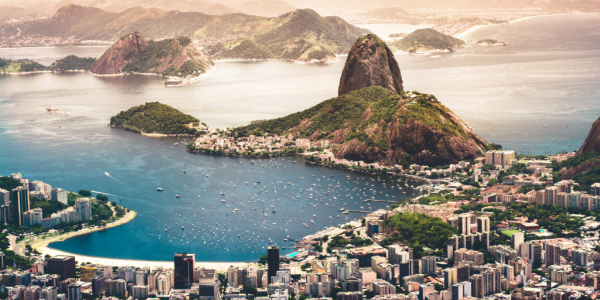
But even more than its places, Brazil is known for its fun-loving people, exemplified by the spirit of their annual Carnival celebrations, marked by samba dancing, skimpy and elaborate costumes and all-night revelries.
One of the biggest misconceptions about Brazil is its official language. Unlike its Spanish-speaking neighbors, Brazil’s official language is Portuguese. The first European settlers arrived from Portugal in the 1500’s to harvest the profitable pau-brasil, the red wood, that gave the country its name.
Before European colonization, the territory of Brazil was inhabited by millions of indigenous peoples. Much of the indigenous population died of disease or fled from the coast. The Portuguese monarchy turned to the African slave trade in order to maximize the potential of gold, sugar, and diamond exports.
In 1888, Princess Isabel officially ended slavery. However, the melding of indigenous, European, and African ancestry can still be seen today in the people and culture of Brazil.
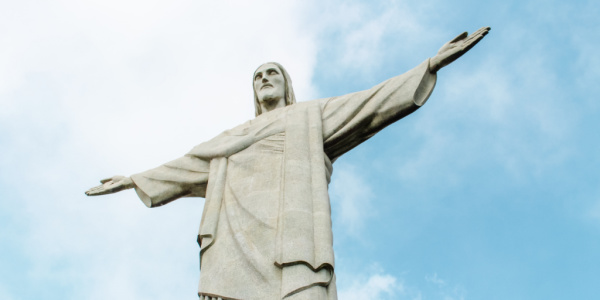
Most travelers visiting Brazil start (or eventually make their way to) Rio de Janeiro, known for its iconic landmarks, gorgeous beaches, boisterous Carnaval celebrations, and as the host city of the 2014 World Cup soccer tournament and the 2016 Summer Olympic Games. While in Rio, which fronts the Atlantic Ocean, it’s almost mandatory to spend some time on Copacabana or Ipanema beach.
These beaches are known for their beautiful views, relaxed atmosphere, and the beautiful people that visit the. Other must-sees include the statue of Christ the Redeemer, which occupies the highest point of the city and offers spectacular views of Sugarloaf Mountain and one of the world’s most beautiful harbors. Rio’s nightlife is also some of the best in the world.
The Amazon region, the largest tropical rainforest on earth, is centered in Brazil. Manaus, the capital of Amazonia, is the starting point for many of the river cruises on the Amazon River and its tributaries such as the Rio Negro, which flows into the Amazon just outside the city. Manaus is also known for its opulent 19th-century opera house, financed by the wealth of rubber barons and considered the finest outside Europe in its day.
Small-ship cruises usually make multiple stops per day for rainforest hikes, visits to remote villages, and dugout canoe rides through jungle creeks. Listen for howler monkeys in the trees and watch for pink dolphins in the rivers. You might also spot sloths and alligators.
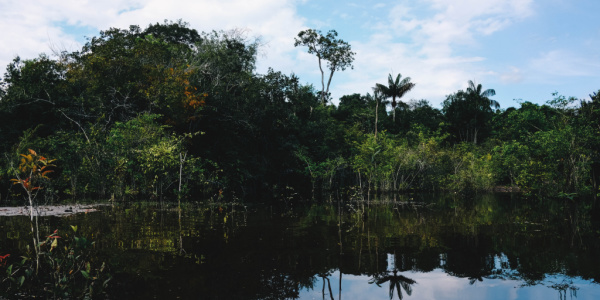
The Pantanal is an often overlooked but fascinating natural region. Lying south of the Amazon, it’s the world’s largest wetlands area and is a prime spot, many say the best in the Americas, for spotting wildlife such as jaguars, tropical birds, and giant otters. (The Pantanal lacks the thick foliage that often obscures Amazon wildlife viewing).
And in the far southeastern part of the country, on the border with Argentina, stands enormous Iguazu Falls, one of the most powerful cascades on earth. A mile and a half wide, it consists of 275 separate falls, producing often thunderous noises and towering mists.
Brazil’s climate is as diverse as the country is large, with microclimates in the far north and along the eastern coast. However, Brazil’s climate can generally be described in three main categories: equatorial, tropical, and temperate. The Amazon Rainforest in Northern Brazil is crossed by the equator and experiences constant rainfall and thunderstorms.
Temperatures generally remain near 85 degrees in the forest. Moisture is almost always at 100%, creating the perfect habitat for the dense, exotic foliage the Amazon is known for. Although the heat and humidity are year round, the heaviest rainfall occurs from December to May.
Most of central and southern Brazil has a tropical climate, with a rainy season from October to March, and a dry season from May to August. Temperatures generally fall in the mid to high 80’s with little fluctuation. The sea on the northeastern coast hovers in the 80’s, while the southern coast averages between 72-77 degrees, making Brazil’s coast a perfect destination for swimming and beach-going.

The farther south you go, the more temperate the climate becomes. Rio de Janeiro and its southern neighbors do experience a colder winter from June to August, with some temperatures falling to the low 70’s, still plenty comfortable for most travelers.
Again, microclimates and exceptions in weather do exist in this diverse country. It is best to research the particular towns, cities, and attractions you want to visit in order to get the most accurate information on weather.
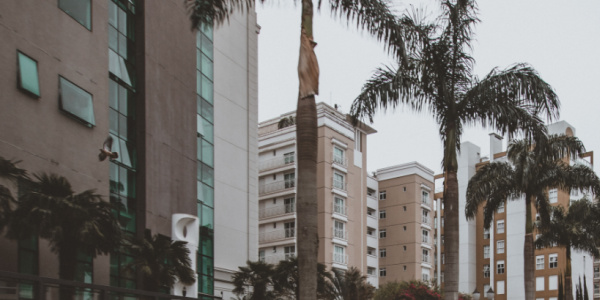
Curitiba lies east of Sao Paulo and is the capital city of the Brazilian state Paraná. While Curitiba is not the most glamorous Brazilian city, it has been recognized as one of the best examples of urban planning. What that means for visitors is clean streets, a pedestrian friendly city center, and a transportation infrastructure that really works.
The city boasts a downtown area closed to vehicles, where pedestrians can walk to shops and restaurants safely. Visitors to the city can hop on one of the many express buses to see the sights, such as the Panorama Tower, which offers a 360° view of Curitiba, or one of the plethora of green spaces. Bus fare is the same no matter how far you’re riding.
This city is a welcome respite from the intensity of other major cities in Brazil, and is well worth a stop if you are traveling to Iguazu Falls from Rio de Janeiro or Sao Paulo.
Reveillon - On New Year’s Eve, Copacabana Beach in Rio de Janeiro is packed with two million party goers. Festivities run from 7 pm to 4 am and include music, dancing, and fireworks. If you want to party like the locals, wear all white, as this is the official color of the Brazilian New Year.
Celebration of Iemenjá - This festival pays tribute to the Candomblé goddess of water, Iemenjá, and is particularly popular in the city of Salvador. On February 2, devotees dress in white and send their blessed offerings out to sea. If the offerings do not return, Iemenjá has accepted them.
Festa Junina (June Festival) - Across the country, Brazilians celebrate the beginning of winter with festivities spanning the entire month. These celebrations also recognize the Catholic saints Saint Anthony, Saint John the Baptist, and Saint Peter. Celebrants also honor the harvest season while enjoying its plentiful food. Specific traditions vary from region to region.
Festival Parintins - Also known as Boi Bumbá, this festival is held in the city of Parintins on the banks of the Amazon. Boi Bumbá is part folk art, part performance, and part storytelling, as two groups compete to see how who can provide the most compelling reenactment of important folklore. Think colorful costumes, big dances, and serious but respectful rivalries.
Nazaré - About two million Catholics parade through the streets of Belém to pay tribute to Our Lady Nazareth in one of the largest religious festivals in the world. The festival takes place in October and is recognized by UNESCO as an Intangible Cultural Heritage of Humanity. No matter what you believe, witnessing devotees pulling the car that contains Our Lady of Nazareth’s image by a rope, is unforgettable.
Carnival in Rio - The city of Rio makes the list again with their famous Carnival celebration. Even though other cities offer their own festivities, Rio by far is the most popular. Look below for a more in-depth guide to Carnival.
What has become one of the biggest parties in the world actually began as a religious celebration. Carnival is held the week before the Catholic observance of Lent, in late February or early March, and marks the last feast and revelry until Easter. The official celebration begins the Friday afternoon before Ash Wednesday and ends on Ash Wednesday at noon, but for some Brazilians, especially in Rio de Janeiro, the party starts months before.
Carnival has become synonymous with Samba, the music and dance of Brazil that showcases its Latin and African roots. In Rio de Janeiro, Samba schools prepare all year for a chance to compete in a city wide competition, held in the Sambadrome Arena in front of over 70,000 spectators. These schools prepare elaborate costumes and parade floats, sometimes costing millions of dollars, to carry their dancers and musicians to victory.
The winning Samba school brings serious bragging rights to its neighborhood for the rest of the year. Ticket price to the Sambadrome parades range from the affordable to the luxurious. Tickets do sell out, so it is best to book early and always through a reputable party, as counterfeit tickets exist.
Some argue that the real party happens in the hundreds of block parties, or blocos, that happen around Rio from early January to mid February. Streets are shut down as musicians and drink vendors move in, drawing in crowds of hundreds to join in the fun. Some blocos boast hundreds of thousands of attendees.
These street parties are for everyone, not just the hedonistic. Although some blocos are known for an anything goes attitude, others cater to a mellower party-goer. There are blocos for the mature, the young, and the whole family.
Lodging in Rio becomes scarce and prices increase dramatically during the Carnival season, so it is best to book early. Rio de Janeiro has become synonymous with Carnival, but this celebration is not unique to one city. Cities all over Brazil, such as Sao Paulo, Recife, and Salvador, have their own unique Carnival traditions that all center around music, dancing, and the joy of celebration.
With Brazil being such a large country, it can be overwhelming trying to decide on your trip route. Most tours will cover specific regions to ensure you’re not spending most of your trip seeing Brazil through the window of your vehicle. Less travel time means you get to experience more.
Many Roads Lead to Rio
The most popular city on tours, by far, is Rio de Janeiro. Located on the eastern coast in the southern part of Brazil, Rio offers a starting point for many Brazil tours. From here, tours head north, to the state of Bahia. Visitors can go to Salvador, once the capital of Brazil, and experience the deep influence of Africa on Brazil's culture. Salvador is known for its music, food, and beaches.
Another popular destination for tours starting in Rio is Iguazu Falls, on the border of Argentina and Paraguay. On their way, tours often stop in Curitiba, a very unique Brazilian City, before continuing through the rainforest, and arriving in Foz do Iguazu.
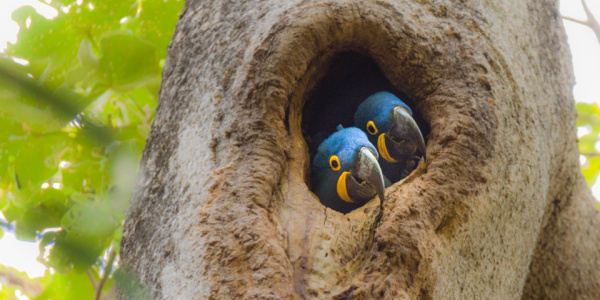
If your dream is to see Brazil’s wildlife in all its glory, then these tour routes are for you. Amazon tours typically begin in the city of Manaus, where guided boats steer you through the river and its abundant vegetation. Some tours cruise leisurely downstream while others offer a bit more adventure.
The other popular wildlife destinations are the Pantanal, the world’s largest wetland, and Bonito, known for its clear waterways and fascinating caves. These two destinations are a 4 hour drive apart, making them a popular pair on tour routes.
If you have the time, resources, and the drive, there are tours that visit every region into one trip! That way, you don’t have to choose between the excitement of Rio and the wonder of the Amazon. You can choose whatever tour route speaks to you.
When you’re eating in Brazil, expect a lot of meat! Brazil is known for its barbecue and serves it in generous portions. In churrascarias, or steakhouses, waiters cut meat straight from the skewer onto your plate.
Feijoada, a hearty stew of black beans and different cuts of pork, is another traditional Brazilian meal. Sea food, as in the dish bacalhao, is also popular along the coast. Pão de queijo, a sort of cheesy bread, is made with tapioca flour and curado minas cheese, and is naturally gluten-free.
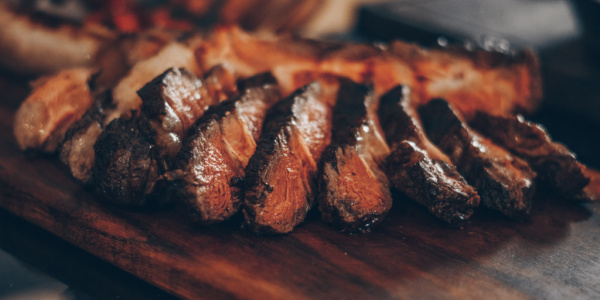
Vegetarians and vegans will be hard pressed to find options, as most meals center around meat with rice and beans, and foods often include cheese. However, por kilo restaurants, which are self-service and priced by weight, could provide some choices.
Brazil also has some of the most available and delicious fruit juices, including acaí, which is often blended with ice and topped with more fruit and granola. And anyone can enjoy cachaça, a sugar cane alcohol used in Brazil’s national drink, the caiparinha.
1. Feijoada - This traditional Brazilian meal is a hearty stew of black beans and different cuts of pork. It usually takes at least 24 hours to make and is traditionally served on the weekends when families can enjoy it together.
2. Moqueca - This dish is typical of the northeastern state, Bahia. This fish or shrimp stew utilizes ingredients commonly found in the region, such as coconut milk, coriander, onions, and dendê, or palm oil.
3. Pão de queijo - Literally translated as “cheese bread,” this dish is just that. It is made with tapioca flour, making it naturally gluten-free, and curado minas cheese, all rolled together and baked until the unique bread rolls are golden brown.
4. Acaí - Brazil is the birthplace of this now-popular superfood, which is often blended with ice and topped with more fruit and granola.
5. Cachaça - This isn’t technically a food, but it sure is an important part of Brazilian meals. Cachaça is a sugar cane alcohol used in Brazil’s national drink, the caiparinha. While the lower end stuff can have a strong resemblance to paint thinner, aged cachaça can be quite high end and smooth.
The best way to ensure that you see everything on your Brazil vacation bucket list, working with a trip designer is a must. Trip designers help travelers make travel arrangements and customize their trip. They often make reservations for accommodations and activities. They do all the hassle and you get to sit back and dream up your perfect trip.
The alternative is joining a pre-planned tour. If you like meeting new people and want to explore Brazil with a group, this is perfect for you. However if you want a personal touch to your visit, then this won't be the right fit. Pre-planned tours are great too, but you only can get so close to your dream vacation. With a Brazil trip designer, you can make your dream trip a reality.
Connect with an expert travel planner now >>
Much like any destination, the cost of a trip to Brazil can vary and depends on many factors. The type of tour whether it be small group or private guided can influence price as well as the duration. If Brazil is just one of many destinations in a vacation package then the price will tend to be higher and a longer duration.
Trips to Brazil tend to range from $2,000 to $6,000.
Some trips do range higher with costs closer to $7,000 or $8,000. These trips tend to include multiple different countries or are designed for luxury travelers with deluxe accommodations.
Browse all $2,000 - $6,000 Brazil vacations >>
The typical trip length on a Brazil vacation is between 10 and 20 days. However, there are trips that go longer, closer to 5 or 8 days and some range higher, closer to 30 and 50 days. It's best to note that these longer vacations do tend to have higher costs.
Trusted Customer
Oct 2024
This was a chance to visit the iconic parts of Brazil. Areas that were very different. I was disappointed in the Amazon I expected more wildlife but there was very l...
Trusted Customer
Sep 2024
Loved my time in Brazil! This tour packs the highlights into 2 weeks which means there are long travel days, lots of flights and it’s full on so be prepared for thi...
Trusted Customer
Sep 2024
The tour was amazing and the programme great our tour leader Deigo was very good and helpful and very caring for group safety. The only thing that I would likeed mor...
1. Does Travelstride have all the tour operators?
2. How does the Member Savings program save me money?
3. Can I trust the tour operator and trip reviews on Travelstride?
4. What does ‘Stride Preferred’ mean?